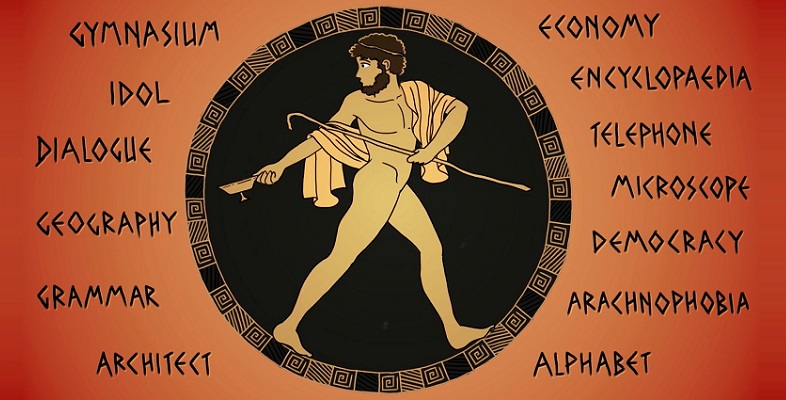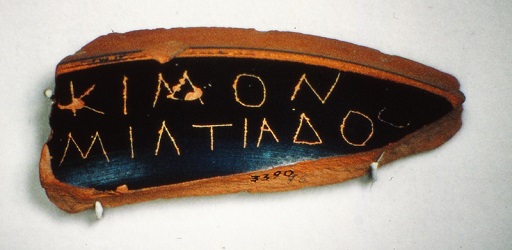1 First steps
Most Greek letters have an English counterpart. A few look and sound very much like their English equivalent. To take one example: the Greek letter ‘beta’ – written as lower case β or capital Β – looks and sounds similar to the English letter ‘b’.
Occasionally a Greek word will look identical to an English one. An example is the king and father of the Olympian gods:
Ζευς (= Zeus)
Activity 2 Broken pottery
This is an ostrakon (Greek οστρακον), a broken piece of pottery, containing the name of an Athenian politician. His name is on the first line. What is it? (Hint: the letters are all capitals).
Discussion
The politician’s name is ‘Kimon’ (also spelled ‘Cimon’ in English). The ostrakon would have been inscribed during an ‘ostracism’, a process during which Athenian citizens, a group restricted to adult males, cast votes for a citizen to be exiled for ten years. If at least 6,000 votes in total were cast, then the citizen with the most votes was ‘ostracised’ (or, on an alternative interpretation, 6,000 votes had to be cast against a single individual).
More than 10,000 ostraka have been unearthed at excavations in Athens, in the agora (the marketplace or forum), which was a centre of Athenian civic life and commerce, and in the Kerameikos (the ‘Potters’ Quarter’).
Cimon was ostracised in 461 BCE, after the failure of his policy of pursuing friendly relations between Athens and Sparta.

